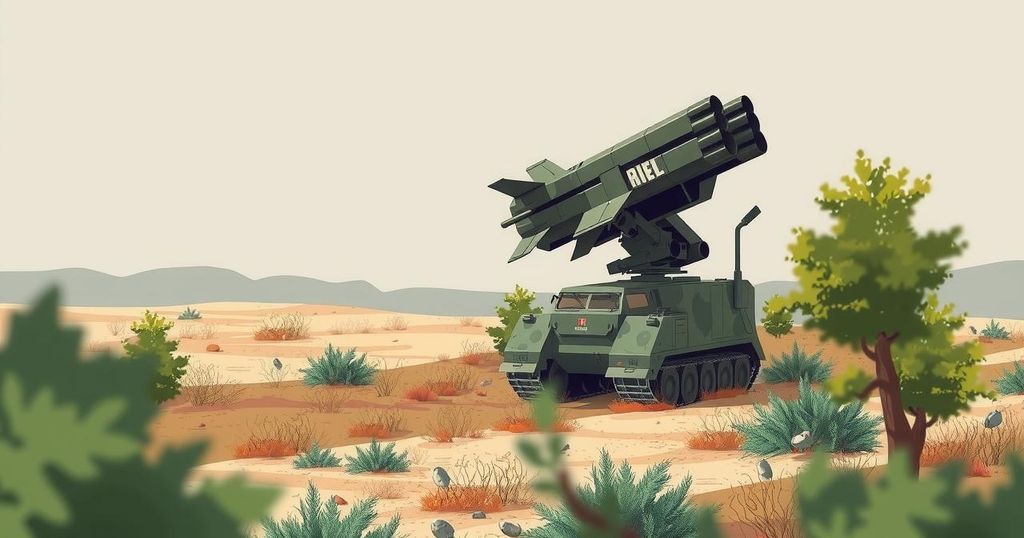Tajikistan has unveiled the HQ-17AE, a Chinese air defense system, during a military parade in Dushanbe, indicating a strengthening of military capabilities and a closer partnership with China. While exact details of the sale are unclear, analysts speculate it occurred in late 2024. This acquisition addresses defense needs particularly along the Afghan border and reflects the growing geopolitical importance of Central Asia.
Tajikistan has publicly introduced the HQ-17AE, a Chinese air defense system, during a military parade in Dushanbe, celebrating the 32nd anniversary of its armed forces. This event signifies the enhancement of Tajikistan’s military capabilities and symbolizes a strengthening partnership with China. While the precise details regarding the sale, such as the number of units and financial commitments, remain undisclosed, it is believed the transaction occurred around late 2024.
The display of the HQ-17AE marks a shift in Tajikistan’s defense strategy, showcasing a burgeoning association with China amid regional tensions. The military parade is a significant tradition for Tajikistan, celebrating its independence from Soviet influence. The presence of the HQ-17AE, a modern air defense system on a wheeled chassis, illustrates Tajikistan’s intention to modernize its forces despite a limited defense budget.
Analysts have noted Tajikistan’s quiet military upgrades in recent years, with the acquisition of the HQ-17AE representing a notable advancement. Observations on social media have highlighted this deal as indicative of deepening ties between Tajikistan and China. Despite the unveiling, there remains a lack of clarity regarding the sale’s specifics or financial aspects, which is typical for military agreements involving China.
The HQ-17AE is essential for enhancing Tajikistan’s air defense, covering a range of aerial threats such as aircraft and drones. It is designed on a mobile platform, facilitating operations in Tajikistan’s rugged mountainous terrain. The system’s radar can detect targets up to 30 miles away, providing significant coverage that bolsters Tajikistan’s security posture against potential threats from neighboring countries.
The military strengthening is particularly relevant given Tajikistan’s vulnerabilities, especially along its southern border with Afghanistan. Ongoing instability and conflict in Afghanistan underline the need for reliable defense capabilities. Acquiring such advanced systems may also serve as deterrence against conflicts with Kyrgyzstan, where tensions over disputed borders have escalated in recent years.
China’s strategic interests in Central Asia play a crucial role in this development. The sale of the HQ-17AE aligns with Beijing’s efforts to augment its influence and security partnerships in the region, demonstrated by substantial investments in infrastructure and joint military exercises. This military cooperation can be interpreted as a method for China to leverage its position while ensuring Tajikistan’s security capabilities.
As the geopolitical situation evolves, Tajikistan’s recent acquisition raises important questions regarding the future of military alliances in Central Asia. Although this deal appears advantageous for both parties, the long-term implications may influence regional dynamics significantly. Tajikistan stands poised to face lingering uncertainties as it strengthens its defenses in a complex geopolitical landscape.
In conclusion, Tajikistan’s acquisition of the HQ-17AE from China represents a significant development in its military strategy, symbolizing a strengthened partnership with China amidst regional uncertainties. The air defense system offers enhanced capabilities to address emerging threats, primarily from neighboring regions. However, the specifics of this military deal remain a matter of speculation, pending further information. As Tajikistan navigates this evolving landscape, its pursuit of enhanced defense autonomy reflects a pressing need for security in a historically volatile region.
Original Source: bulgarianmilitary.com






